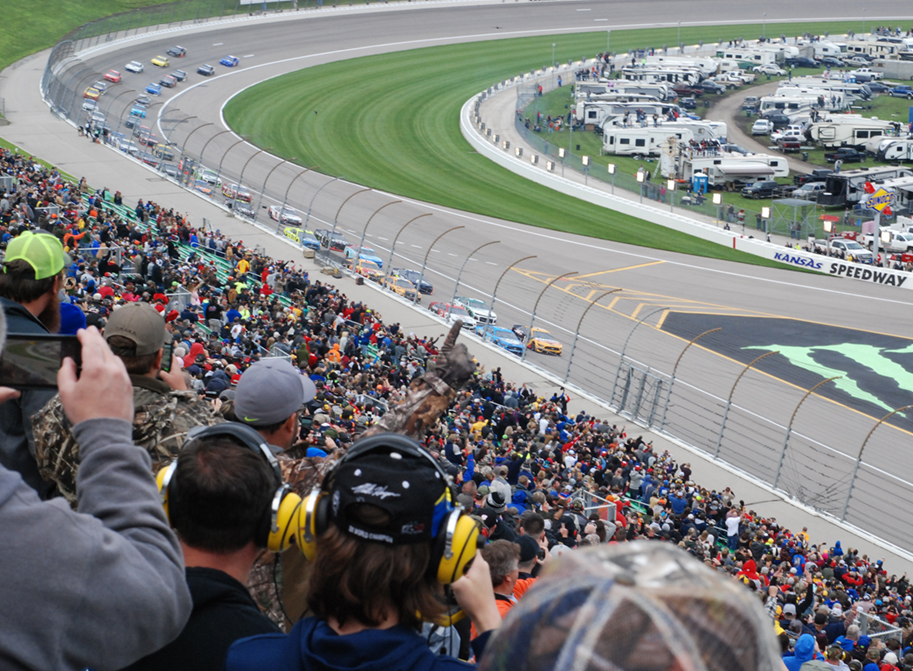
Racing and Strategic Planning – What it Takes to Win the Race! I recently went with my husband and son to the Kansas Speedway in Kansas City, KS to watch my very first stock car race. The experience was amazing and one I will never forget.
In the middle of the race (when cars were going around and around and there were no cautions for about one hundred laps) I got inspired to write this article as I saw a clear analogy between stock car racing and strategic planning. Since I had no paper or pen, I typed myself an email on my phone! Needless to say, it took me a while to type this entire article with one finger yet I thought it was worth it to share with you my observations as a result of this wonderful experience:
- I reflected on the importance of each race team having a strategic plan that everyone knows and understands. If only the driver knows the plan and the vision then the crew cannot support him/her. The same way, you can’t lead and run a company on your own. You need your crew and they need to know the specific strategies to win the race. Every person on the team has a job to do in order to win. If one lug nut is not tight correctly on the wheel, the car can lose that wheel and will be out of the race. At the minimum, will lose valuable time that can cost the team the victory.
- The driver is key but is not the most important person on the team. He/she drives the car but if the car is no good, he/she, nor the team, are going anywhere…the crew that prepares the car and supports the driver is hugely important to win the race. For example, if their driver is in first place and goes to the pit for gas or to change tires and the crew is not fast and accurate, the driver can lose the first place easily—in a matter of milliseconds.
- I also noticed there is constant communication on the ground among the team and between the “spotter” and the driver. The same should happen in a company. The leader needs to communicate with the leadership team and they, in turn, should communicate with the rest of the staff continually in order to keep the momentum going.
- The stock car teams are very organized and do things orderly. They follow rules. Every game, every sport, every team, every industry has rules. The best players follow the rules. They take them seriously because there are consequences and penalties if they violate the rules. Even though in corporate America daily decisions may not be life or death, the decisions leaders make do affect the lives of the employees.
- There are things ahead that only the driver can see or feel. He/she needs to communicate and alert the crew immediately to come up with a plan of action. For example, the driver may be the only one to notice that something is wrong with the car. At the same time, there are things ahead that only the spotter can see and need to tell the driver to watch for it. For example, if the spotter sees a wreckage and there is a fire, he/she needs to tell the driver if he/she can get through the smoke or not. If the driver makes a bad move, he/she can wreck and completely lose his car and in some instances his/her own life. The entire team loses—no car, no team. They have to trust each other. The driver’s life may depend on it. Again, the same happens in a company. Sometimes the leader sees things ahead and other times the staff sees things that are coming up that could affect the company’s performance.
- You could say the race is not fair. One driver could have the lead for most of the race (even one hundred laps!) and lose at the very last minute because of a wreck caused by one bad move or by another driver that cut him/her off or hit his/her car at the wrong angle and sent him/her spinning off the track. The same happens in life. Your company can be doing excellent for many years and all of a sudden the unexpected happens. One of your key employees leaves, or the market crashes, or a new competitor comes to town. It can be anything and you need to keep in mind that in those moments is when you have opportunities to start over or fix things that have been broken or on hold for a while in your company.
- I also noticed that if there were no cautions and the cars just went around and around it becomes boring. There is no action or adventure. That’s when companies get in a routine and start doing the same thing over and over. The employees become unchallenged, the customers get bored, and the leadership becomes stale. It’s time for a change and move things around. Time to introduce new ideas and do things differently.
- Finishing the race is what matters in the end. There was one car who went to the garage four times and every time he started a lap he had to go back and get something else fixed but he/she finished the race. In fact, drivers are rewarded with points for every race they finish regardless of how many laps they were behind. What goes on their record is that they finished. The same happens in business. Every time a company tries something new and it doesn’t work, the team needs to figure out new strategies to continue the race but they must never give up. They must finish the race.
Even though all the teams want to win and they all have strategies, there is only one winner. Only one driver and one team gets the trophy. Only one driver gets to do the “burnout” after crossing the checkered flag! Sometimes, however, even when you have the best team and the best strategy, life may throw a dart at you and your company and you don’t win. In those moments, you need to remember past successes, gather your team, pick up the pieces and with your head up, start over. The most important thing is to never give up and finish your race!







